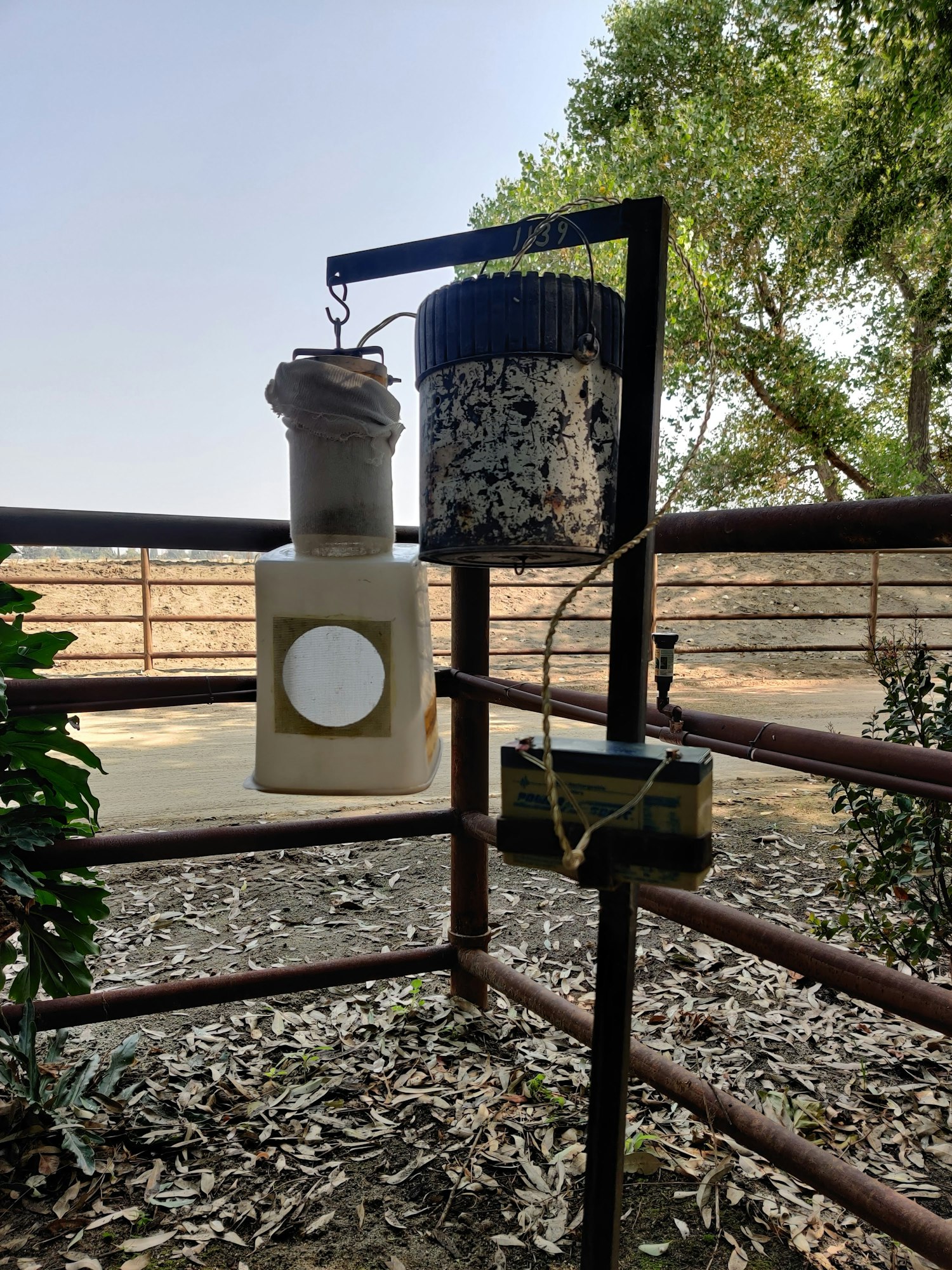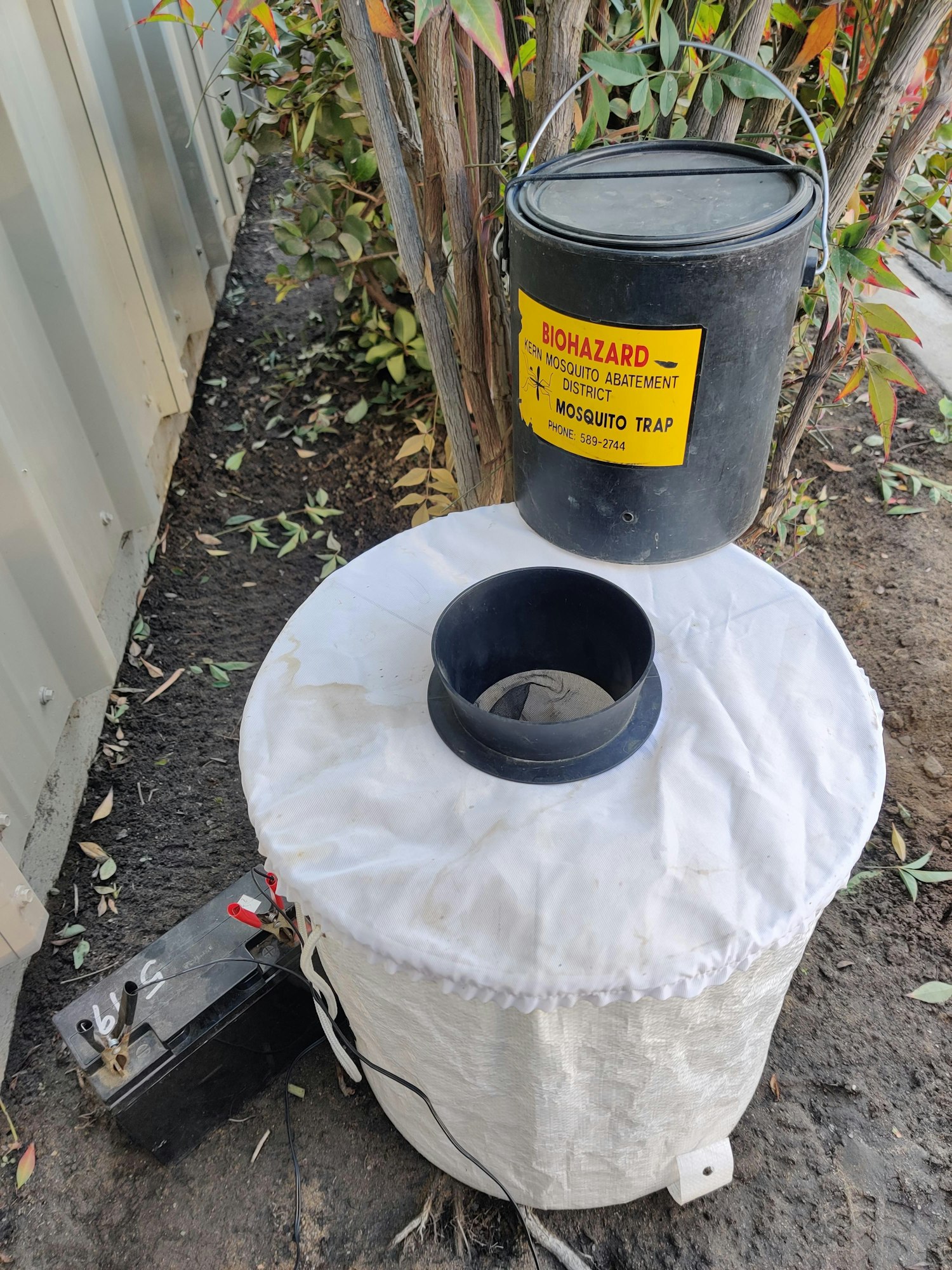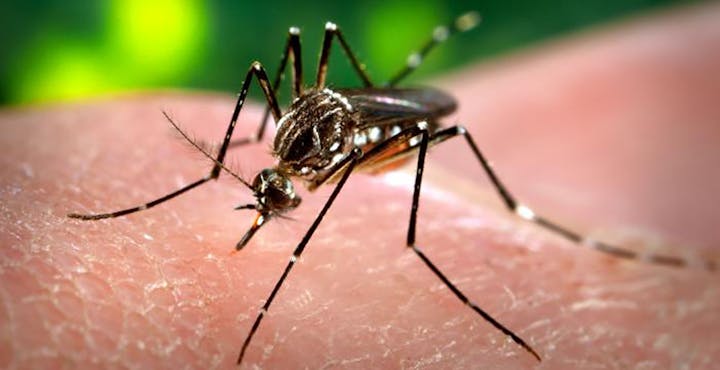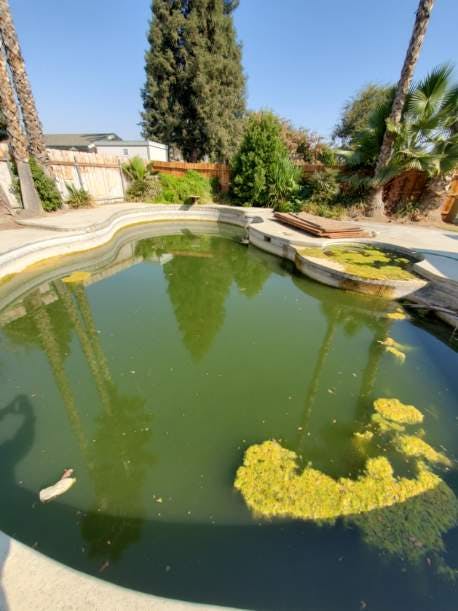Why and how do we conduct mosquito surveillance at KMVCD?
Routine surveillance helps us to identify the species of mosquitoes, to monitor diseases present in mosquito populations, and to implement control measures in high-risk areas. One of the first cues that female mosquitoes use to find humans is following the trails of carbon dioxide we exhale. Mosquitoes have receptors on their bodies, including on their antennae and legs, which equip them to sense carbon dioxide, as well as sniff body sweat and other odors humans produce. Once they have taken blood, female mosquitoes will look for nutrient-rich water to lay eggs. We use this knowledge to our advantage and set up various traps to collect and monitor different species and their different reproductive life stages. We collect mosquitoes from all around Arvin, Bakersfield, Buttonwillow, Lamont, Shafter, and Wasco.
Carbon dioxide (CO2) trap:

CO2 traps are set in the field for 10-12 hours. The trap constitutes a plastic container attached to a fan, which is powered by a battery and an insulated, black container full of dry ice (which is a solid form of CO2) is set beside the fan. Holes on the dry ice container release plumes of carbon dioxide which lure mosquitoes to the trap. When a mosquito nears the trap, the impellor fan suctions them into the plastic container, where they are trapped until collected (typically the next day). A hole on the plastic container (covered with mesh) allows a collector to peer inside without opening the trap. The continuous operation of the fan keeps mosquitoes from escaping.
BG-Sentinel trap:

This trap targets female mosquitoes seeking blood. It is operated for 10-12 hours using a 12V battery. It uses scents that mimic human odors and visual cues (black center with a white background) to entice host-seeking mosquitoes. It can also be deployed with dry ice (CO2). Artificial human scent lures are mostly effective in trapping human-loving mosquitoes like the ‘ankle-biting’ Aedes aegypti.
Gravid trap:

The word ‘gravid’ means ‘pregnant’ or ‘carrying eggs.’ This trap is designed to attract female mosquitoes that are looking for a suitable water source to lay their eggs (after obtaining blood). The bottom tray holds stinky, nutrient-rich water, which is a fermented infusion of yeast and animal (rabbit and hog) chow.
As female mosquitoes land on the water to lay their eggs they are sucked up into a collection container that sits inside the top (grey) box. The fan is operated with a battery that lasts for about 10-12 hours.
Autocidal Gravid Ovitrap (AGO):

AGOs also attract female mosquitoes ready to lay eggs, but this trap does not require a power source. The bucket contains stinky hay/water mix, which is suitable for the growth of mosquito larvae and pupae that depend on water for their growth.
The smaller container on the top has a mesh wire at the bottom and a sticky sheet on the sides. Female mosquitoes are lured by the smelly water to enter the trap. Once they are in the trap, the mesh prevents them from touching the water surface, so they cannot lay eggs. Once in the trap, a mosquito gets stuck to the sticky sides. If females manage to lay eggs, the hay water contains larvicide. This trap reduces populations by targeting egg-bearing females.


